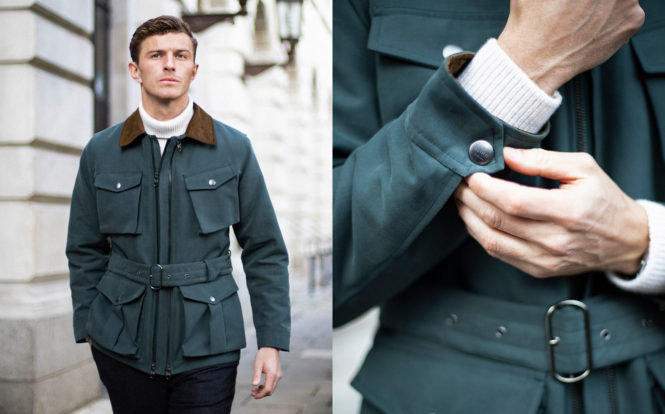“Direct to Consumer” companies are everywhere these days. Some are more effective than others when it comes to actually executing on this ideal – often it’s just marketing fluff – but the concept has become commonplace. By “cutting out the middleman,” many young brands are working to offer more competitive pricing than their more traditional competitors. But as common as these companies are, it’s not often that an established brand pivots to this model. That’s exactly what happened earlier this year when Private White V.C. (one of my favorite clothing companies) decided to change its business entirely.
Readers will remember Private White V.C. as the brand behind my popular Twin Track jacket, as discussed here and here. It’s a truly excellent piece of clothing and I have been enamored with the brand ever since I purchased it. Unlike many brands on the market, PWVC owns their manufacturing outright. The factory has been around for over 100 years, but the PWVC brand launched in 2011. They utilized a traditional business model of opening wholesale accounts around the globe, which is how I was introduced to them.
Then, in a complete 180 from what seemed to be working well (at least from my perspective), PWVC decided to change their business model. Starting about six months ago they began rolling out some updates; first was a new website that was more in line with the style of a direct-to-consumer brand, sans-serif fonts and all. Then there was the new pricing manifesto, along with breakdowns of the costs of each component of their products (a la Everlane). The popular “us vs. them” chart also appeared on product pages, which says that markups will now be 2-3x the cost of production instead of the 5-7x needed for traditional wholesale.
Many of the core products were re-released as well, featuring some updates to designs and materials. The newest updated product is the Twin Track, which is quite different than the one I purchased two years ago. Different fabric, hardware, pockets, and design elements make it a rather distinct version of their core style. Whether these changes are good or bad is really up to individual taste, as I doubt any of them will have a significant effect on the overall quality of the product. I know that PWVC can make great stuff and I am confident that their new products are just as good or better, though personally I’m happy to have the old design.

So what do these changes mean for future customers? I can’t be sure how everything will shake out but this is my best guess of what could happen, at least in theory:
- prices will come down to account for the removal of wholesale markup
- wholesale accounts will be phased out (or at least reduced)
- most or all products will only be able to be purchased directly from PWVC
- little to no discounts due to lower margins (aka “it’s always on sale”)
- Many products will feature new “updated” designs
This all sounds well and good, but of course there is the question of how much of an effect it will actually have on the customer.
As an example: when I initially purchased my Twin Track two years ago, the MSRP was 595 pounds. When removing VAT it came down to 495.8 pounds, and when adding the 15% promotion that was running at the time, the result was 421.4 pounds ($590 at the time of purchase). No small sum, but a fair price for an excellent piece of clothing that has become one of my all-time favorites.
The newly relaunched Twin Track is $765 for US customers, which means that the price has in fact gone up, despite the new pricing manifesto (and PWVC has made it clear that sales are a thing of the past). In fairness, the UK price is 550 pounds which is a slight decrease from 595 pounds, so perhaps wrapped up in this price restructuring is a bit of protection against currency fluctuations. No matter how you slice it, though, this isn’t the dramatic change that the pricing manifesto seems to proclaim. Perhaps – as is so often the case – the charts showing how much you are paying vs. how much you could be paying are more theoretical than literal. After all, nobody has ever actually paid $130 for a shirt from Everlane, even though they may say that it’s worth as much (a rather dubious claim).
In today’s competitive market, deciding how to price something is a complicated subject. E-commerce has put brands that never would have crossed paths in direct competition over the same customers, and international shipping and changes in currency values can create lopsided situations for retailers and brands alike (and none of that even takes into consideration the cost to actually make the thing). Going direct-to-consumer gives brands more control over how their product is priced and displayed, as well as giving them some marketing tools. Whether Private White V.C.’s changes will actually affect customers or merely give the brand some new talking points is still yet to be seen, although I am skeptical. The good news is that no matter how you choose to spin it, they make a good product. And to me, that’s the only really important thing.

